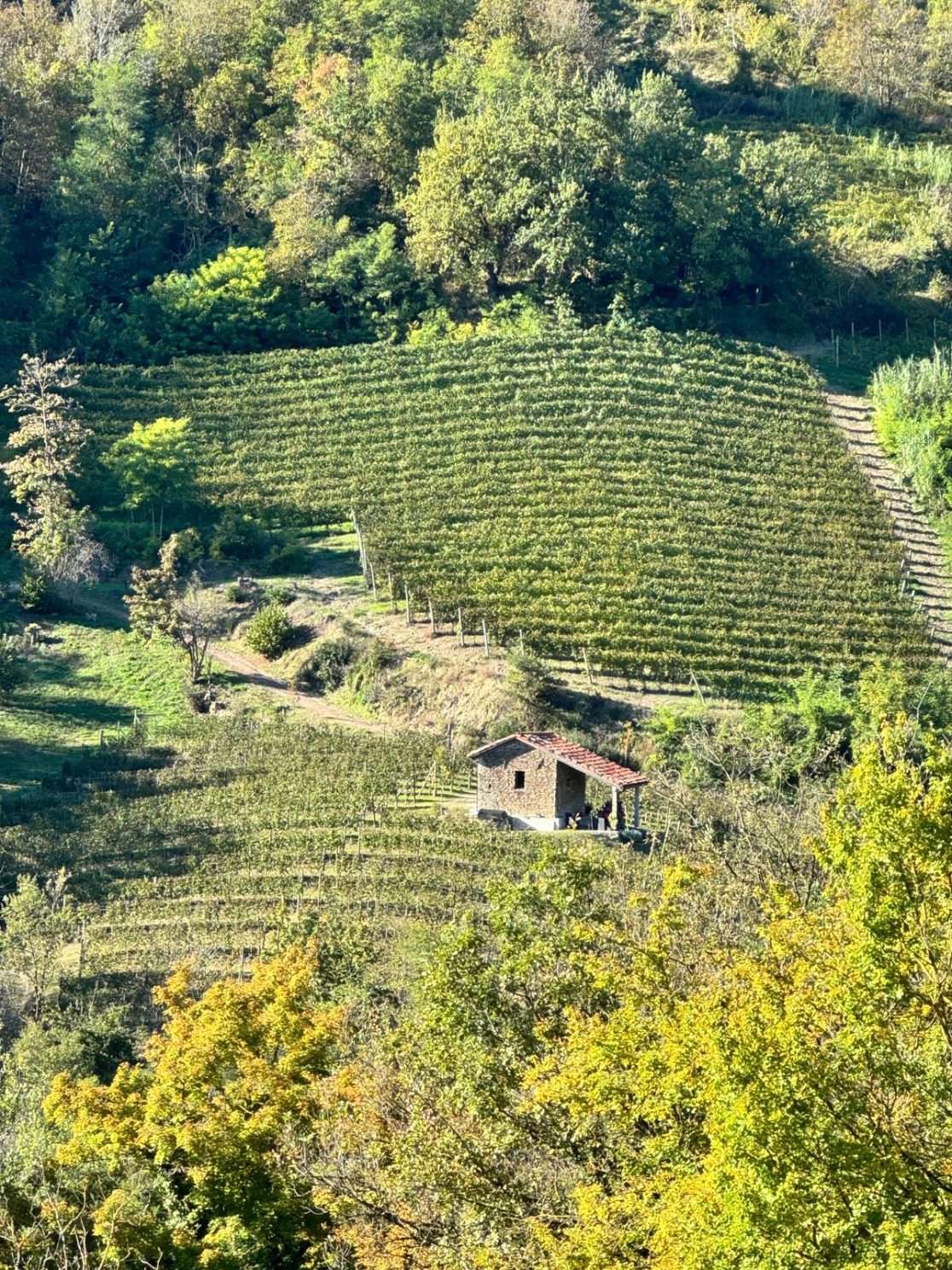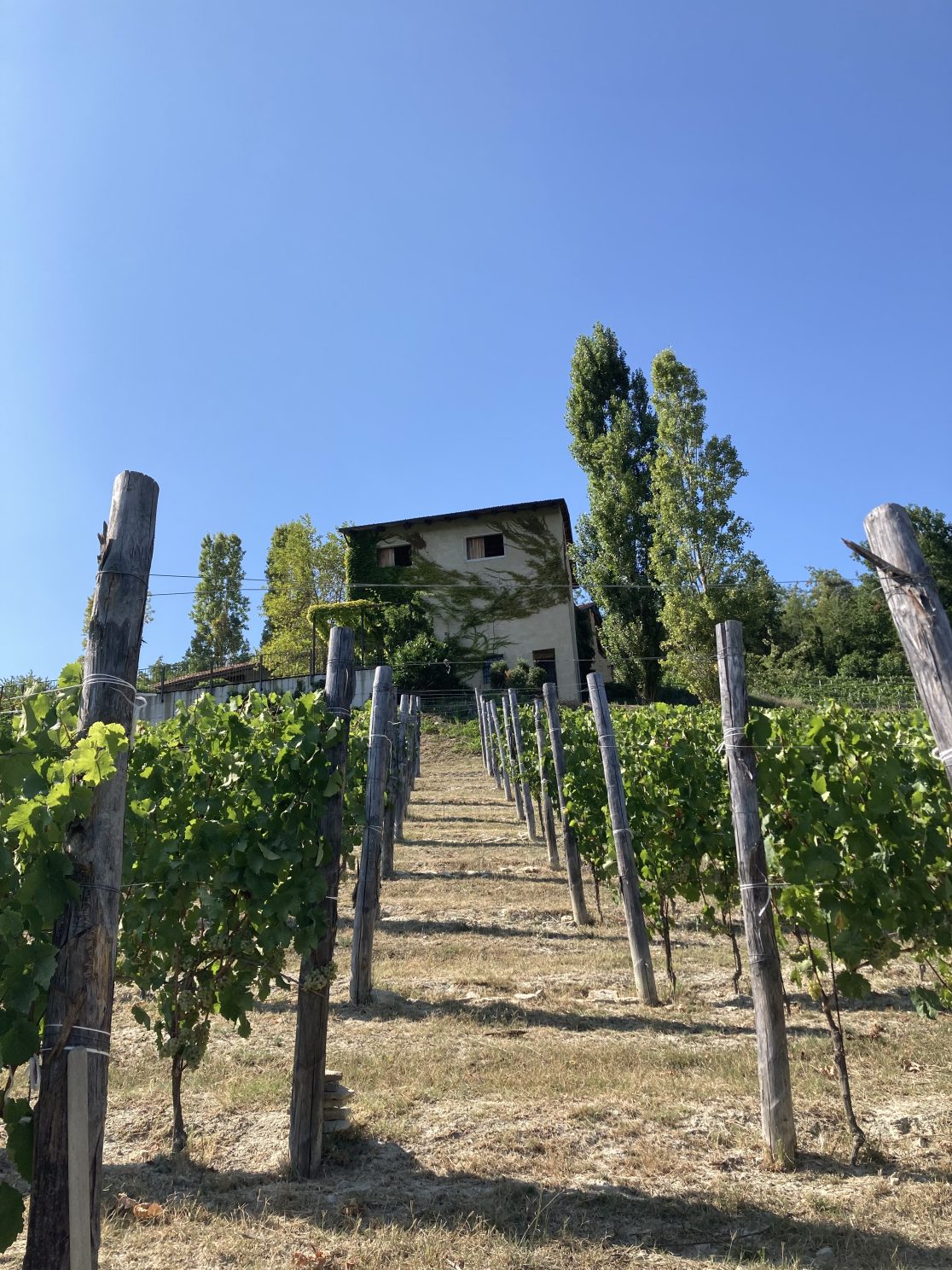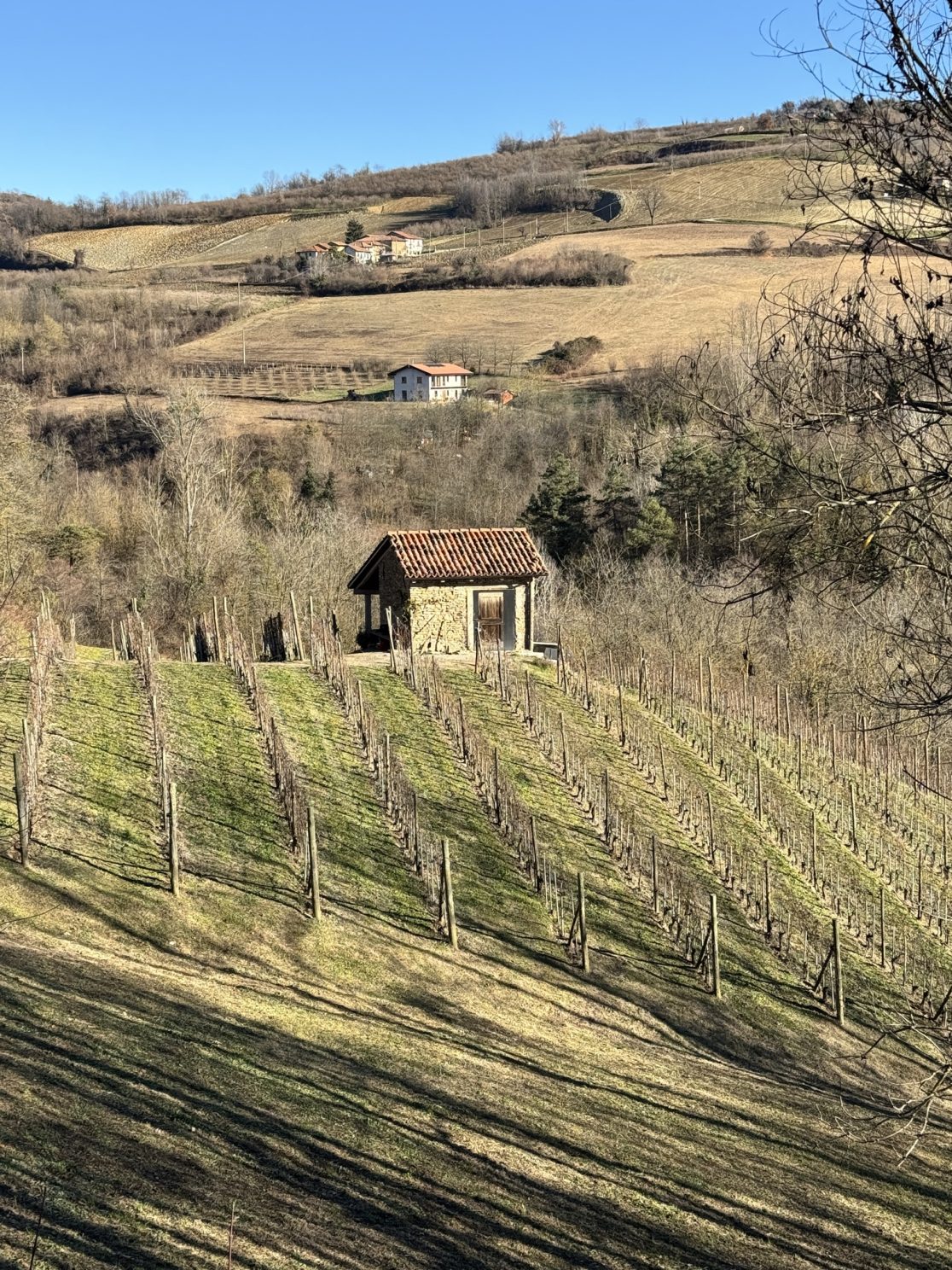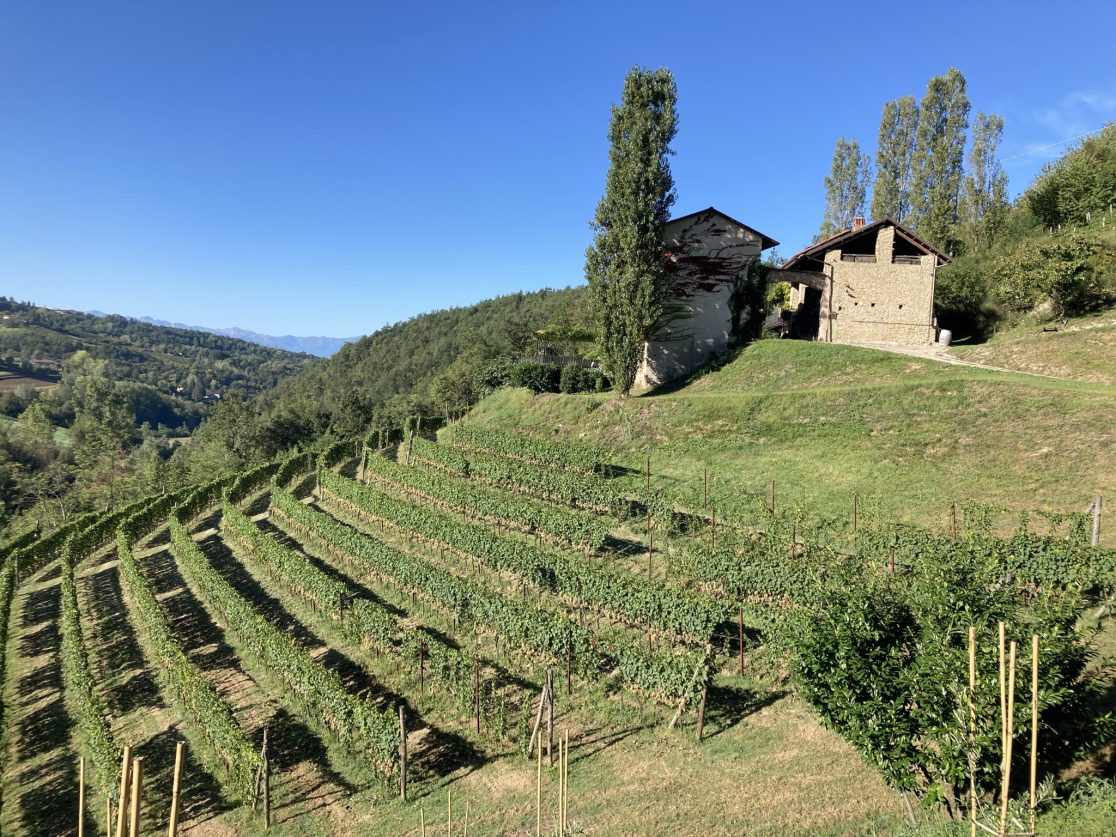The Vineyards.
Text Martina Tarditi*
The Bocciarda vineyards cover an area of one hectare where Riesling, Pinot Noir and Barbera are grown. They are embedded in the ecosystem of the hill, surrounded by patches of woodland, fruit trees and shrubs.
Pinot Noir and Riesling follow each other on the same slope, grown in white soil with lots of gravel and stones. Their predominant orientation is south-east.
The vineyards are farmed organically in order to cause as little disturbance as possible, respecting the natural balance of the ecosystem.
Most of the work is done manually including the mowing of the spontaneous vegetation, those naturally occurring plant species. Throughout the season, the vineyards are in bloom and lots of insects find food and habitat there.
We avoid the soil being heavily compacted by tractors, keeping the soil loose and well aerated with a good air-water balance. The ratio between macro and micropores is optimal.
Fertilisation is done in autumn after the harvest. Only dried and composted sheep manure is applied, which enriches the soil with nutrients and improves its structure. This is important for the insects and worms living in the soil which significantly support the soil fertility.
Green manure is sown in autumn in alternating rows of numerous species from different plant families:
– Grasses (oats, barley, etc.) which lie on the ground after drying. They serve first as mulch, and later are incorporated into the soil to improve the soil structure. Mulching limits the evaporation of soil water which overheats the area and slows the grass growth.
– Legumes (vetch, pea, etc.) are rich in flowers which are essential for biodiversity and pollinating insects. They also have the ability to fix atmospheric nitrogen and enrich the soil.
– Crucifers (rape, mustard, etc.) which are characterised by a showy flower, have an outgassing effect. This prevents the proliferation of fungi and moulds that are harmful to crops and can cause diseases.
The vegetation cycle of the green manure is almost perfectly coordinated with that of the vines so that they neither interfere with each other nor compete for resources. Green manure is sown in autumn in alternating rows of numerous species from different plant families.
The surrounding forests facilitate the migration of wild animals by offering somewhere to shelter without harming the vines. Wildlife such as birds and deer are attracted to the grapes, especially in late summer. They come to the vineyards to quench their thirst so we offer them fresh water at the edge of the vineyards. This means some of the grapes are spared so that we can harvest a few.
The Bocciarda vines benefit greatly from the trees and forests throughout the surrounding area, as they lower the average daily temperature by keeping the air cooler. In addition, the temperature difference between day and night is greater, which allows for good aroma synthesis.
*Martina Tarditi
Martina plans the plant protection strategy for our vineyards for the whole year. We only use biological pesticides, when and how much is very important in order to get very high quality grapes. She advises us in all aspects of viticulture with a high level of competence and is a great help to us.
Martina was introduced to the secrets of viticulture and oenology at the University of Agricultural Sciences. It was there that she developed her passion for
She completed her studies with a bi-national course in Italy/France and gained experience in the vineyards and wineries of various French wine regions before returning to her roots in Piedmont. Since 2018 she has been working as an agronomist at Terre di Barolo.




